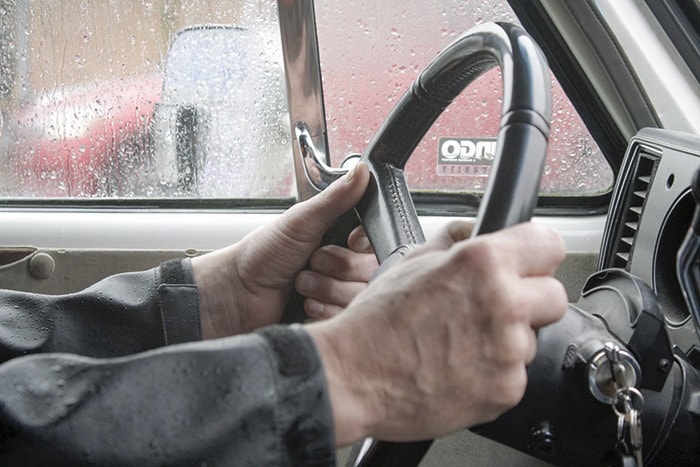When David Cornelius recently went to pick up his assistance cheque, the Langley man learned that he’d been approved for a disability income, bringing his support from $220 to $1,000
“The weight lifted off my shoulders,” he said.
He immediately spent $400 on some overdue maintenance for his travel van, which has been his home for more than a year.
“I did a (transmission) service, rear diff and oil change,” Cornelius said.
In November when the Times revisited its story about Cornelius, he was worried that he couldn’t afford the cost of running maintenance on his vehicle.
Titled “Still The Man In The Van,” the follow-up article described his frustration at trying to get by on $220 a month in social assistance and his struggle with the diabetes that makes it hard for him to work as a stone mason.
Cornelius said the decision to put him on disability came after his diabetes got worse.
About two months ago, he started needing injections of insulin to regulate his blood sugar. Up until then, he could get by with pills.
That was a big problem because insulin has to be refrigerated and he couldn’t afford to run a propane-powered fridge in his van.
Cornelius said a number of people offered to store the insulin for him in their fridges, including MLA Mary Polak’s office and a local pharmacy, but he had to say no because he needed around-the-clock access, knowing that his blood sugar levels can fluctuate at any time.
Finally, the Gateway of Hope homeless shelter in Langley City agreed to store his insulin for him in a fridge and allow him access to it around-the-clock.
Cornelius expressed gratitude to the people who have helped, in particular the non-profit Stepping Stone Community Services Society in Langley.
“These people are good people,” he said.
The big change, he said, is seeing some “light at the end of tunnel” and knowing that he has enough to get by.
“Life will improve.”
His new challenge will be finding a place within his budget to rent.
He estimates that, if he can keep working a little, and he can get a whousing subsidy on top of his disability pension, he could manage $800 a month, assuming that includes utilities.
There isn’t a lot in that range in the Langleys, so he is thinking about moving away.
“My search is everywhere.”
Any place he finds will have to be prepared to allow a dog, because he isn’t going to abandon Yuki, his Siberian husky.
When Cornelius spoke to the Times for the November article, he said he has noticed a disturbing increase in the number of people living in vehicles over the last six months — about 50 per cent more.
He estimates that on any given night in the Langleys, there are about three dozen vehicles in various parking lots, all occupied by people who have no homes.
Fraser Holland, the program manager of Stepping Stone Community Services Society in Langley, said the number of homeless people in vehicles has gone up, and likely by the amount cited by Cornelius, but it is hard to calculate the exact number.
Roughly one in three homeless people in the U.S. live in vehicles, according to a Seattle University study of “car campers,” “mobile homeless” and “vehicle residents.”
In Canada, the proportion is believed to be smaller, about one in 10.
